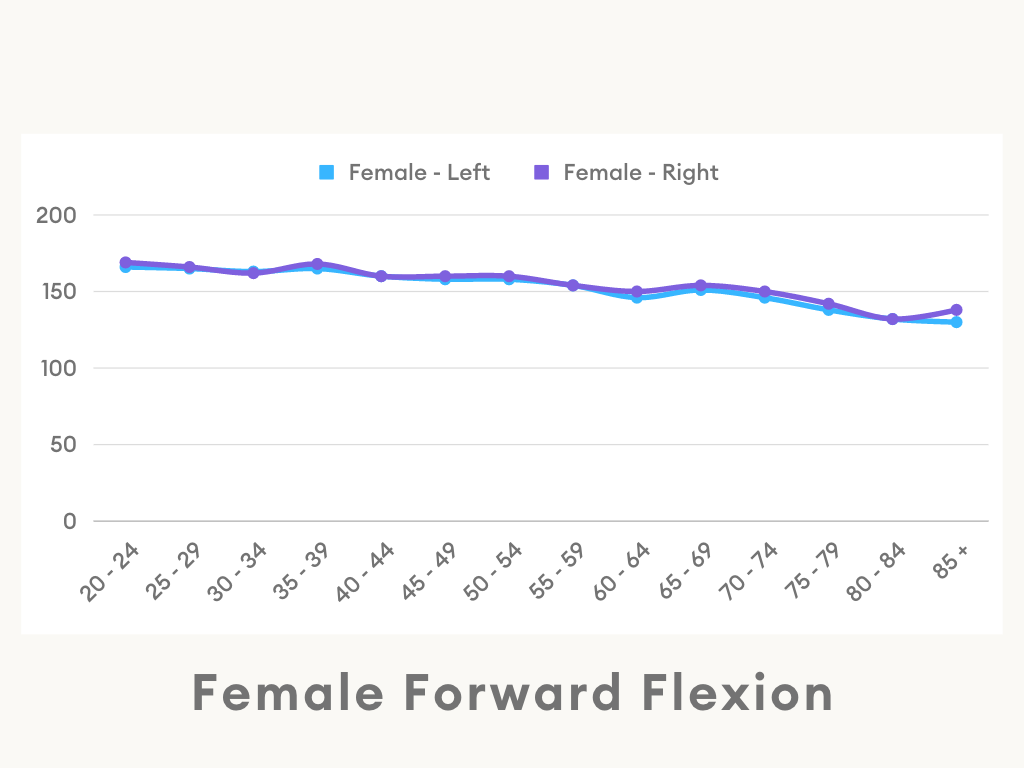The normal shoulder range of motion is 157° -162° for Forward FlexionIs an upgoing movement from the front side or the sagittal plane facilitated by the pectorals, anter More, 148°-152° for AbductionIs a sideways upgoing movement in the frontal plane brought about by the supraspinatus and the mid More, and 53° – 59° for External RotationThe range of shoulder external rotation is one of the most important metrics in the field of general More.
You should be able to move your shoulder in all directions-forward, backward, up and down without any pain or discomfort. If you are experiencing pain or a decrease in range of motion, it is best to consult with a doctor to determine the root cause of the problem and the best way to treat it.
What is normal shoulder range of motion?
The American Academy of Orthopedic Surgeons (AAOS) stated that the normal range of motion in shoulder is 180° for flexion, 180° for abduction, and 90° for external rotation1.
However, this study was published in 1965 and the methods of measuring the shoulder range of motion of the participants is not specified.
More recent studies have shown that:
normal range of motion is less than 180° for flexion and abduction, and less than 90° for external rotation
The charts below show the data from the BMC Muscoskeletal Disorders study for Forward Flexion, External Rotation and Abduction. The data can be found here
Normative Shoulder Range of Motion Data
Average range of active shoulder flexion, abduction and external rotation was measured in a population cohort aged 20 years and over to provide normative shoulder range of motion data.
What is Normal Shoulder Abduction Range of Motion?
Abduction is the outward and upward movement of your arms from rest.
The normal shoulder range of motion for abduction for males and females is 148°-152°.
The highest ROM for abduction for males is 159º, recorded at 20-24 years of age. The ROM for abduction decreases as far as 119º for males aged 85+.
The highest ROM for abduction for females is 159º, recorded at 35-39 years old in their right arm. Interestingly, this shows an increase in abduction range of motion with age between 20 – 39 years old. The lowest abduction ROM for females is 115º measured at 80-84 years old in the left shoulder.
You can see the full results for abduction range of motion of the shoulder in our Abduction Range of Motion Charts Page.
What is Normal Shoulder Flexion Range of Motion?
Forward Flexion is the forward and upward movement of the arm. The normal shoulder ROM is 157° -162° for Forward Flexion.
The highest ROM for flexion in males is 174º, measured at 20-24 years of age in the right arm. The lowest ROM for flexion measured in the study is 130º, measured at age 85+ in the left shoulder.
The highest ROM for flexion for females is 169º, also measured at 20-24 years of age and in the right arm. The lowest ROM for flexion for females is also 130º measured for participants aged 85+ in the left shoulder.
You can see the full data for flexion ROM of the shoulder in our Range of Motion Charts page.
What affects normal range of motion?
Age
Shoulder range of motion is affected by age. Generally, as people age their ROM decreases. However the results show that following a decrease in range of motion in their late 20’s, all cohorts showed an increase in range of motion in their 30’s. This could be due to lifestyle factors in the 20’s of younger adults entering the workforce, reducing their physical activity and therefore reducing their range of motion.
Entering their 30’s, adults may place higher importance on their health, and take appropriate actions to increase their wellbeing, such doing activities to increase their shoulder ROM.
The data for Abduction and External Rotation also show periodical increase in shoulder ROM with age, which further suggests that lifestyle choices can increase range of motion, and reduce the overall loss of ROM as we age.
Medical history
An individual’s medical history contributes to shoulder ROM- acute injuries have an immediate impact on shoulder range of motion, whereas medical conditions such as diabetes is linked to reduced range of motion.
Patients with diabetes are also more likely to develop frozen shoulderA condition where shoulder movement becomes very limited and painful. The cause is often unknown, bu More.







